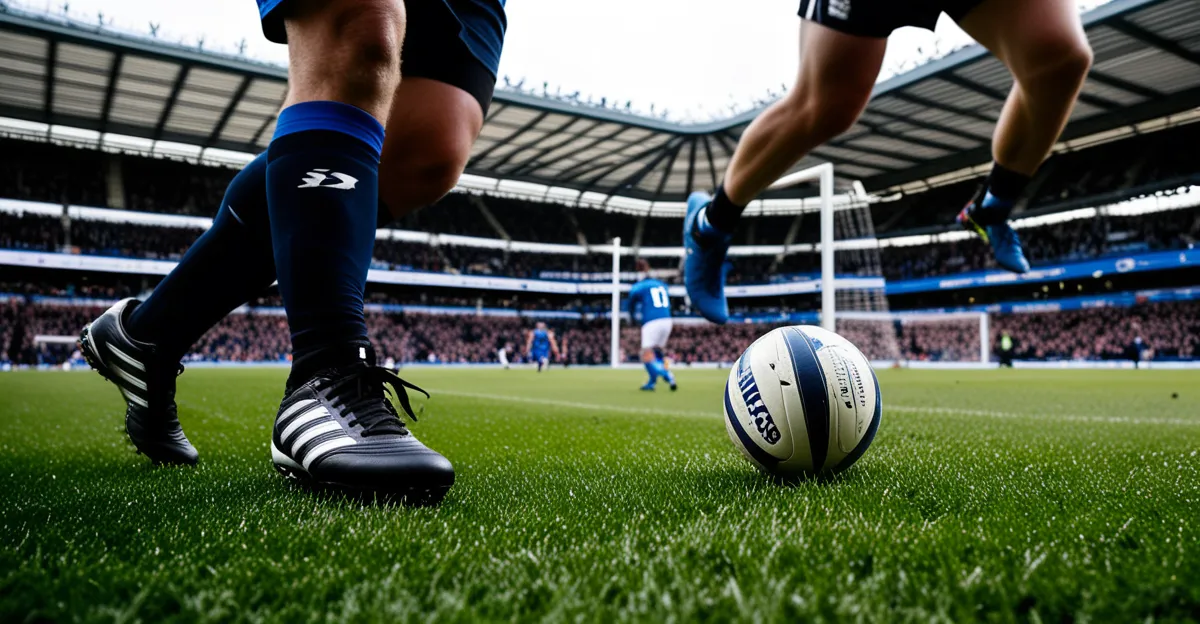The Revolutionary Impact of Technology on Modern UK Sports
In the ever-evolving landscape of sports, technology has emerged as a game-changer, transforming the way athletes train, compete, and engage with their audiences. The UK sports industry, in particular, has been at the forefront of this technological revolution, leveraging innovative tools and methodologies to enhance performance, improve safety, and increase participation.
Enhancing Performance Through Data Analytics
One of the most significant ways technology is modernizing UK sports is through the use of data analytics. This involves the collection, analysis, and interpretation of vast amounts of data to gain insights into athlete performance, team strategies, and game outcomes.
Have you seen this : What Are the Key Strategies for Adults to Stay Fit While Playing Sports in the UK?
The Role of Data in Decision Making
Data analytics has become a crucial component in the decision-making process for coaches, trainers, and athletes. By using advanced statistical models and machine learning algorithms, teams can analyze player performance in real-time, identifying areas of improvement and optimizing strategies.
For instance, in football, clubs like Liverpool and Manchester City use data analytics to track player movements, ball possession, and scoring opportunities. This data-driven approach helps coaches make informed decisions about player selection, tactics, and in-game adjustments.
In parallel : What Are the Unique Challenges Faced by UK Athletes Today?
### Example of Data Analytics in Football
- **Player Tracking:** GPS and wearable technologies track athletes' movements, speed, and distance covered during matches and training sessions.
- **Ball Possession Analysis:** Advanced software analyzes ball possession statistics, including time spent in different areas of the pitch and passing accuracy.
- **Scoring Opportunities:** Data models predict scoring chances based on historical data and real-time game statistics.
- **Injury Prevention:** Analyzing physical activity and training data helps in identifying potential injury risks and developing preventive strategies.
The Integration of Artificial Intelligence and Machine Learning
Artificial intelligence (AI) and machine learning (ML) are increasingly being used in the sports industry to automate tasks, predict outcomes, and personalize training programs.
AI in Injury Prevention
AI algorithms can analyze vast amounts of data from various sources, including wearable devices, medical records, and training logs, to predict the likelihood of injuries. For example, the English Premier League has partnered with AI companies to develop predictive models that help teams identify at-risk players and implement preventive measures.
Personalized Training with ML
Machine learning enables the creation of personalized training plans tailored to individual athletes’ needs and performance levels. By analyzing data from past performances, ML algorithms can suggest specific exercises, drills, and recovery strategies to enhance performance and reduce the risk of injury.
Virtual Reality and Augmented Reality in Training
Virtual reality (VR) and augmented reality (AR) are revolutionizing the way athletes train and prepare for competitions. These technologies provide immersive and interactive environments that simulate real-game scenarios, allowing athletes to practice and improve their skills in a controlled setting.
VR Training in Sports
In sports like cricket and rugby, VR is used to simulate match conditions, enabling players to practice their skills in a highly realistic environment. For instance, the England and Wales Cricket Board (ECB) has introduced VR training programs to help batsmen practice against different types of bowlers and conditions.
AR in Physical Education
Augmented reality is also being integrated into physical education programs to make learning more engaging and interactive. For example, AR apps can overlay digital information onto real-world environments, allowing children and young people to participate in interactive physical activities that combine education with fun.
The Impact of Sports Technology on Participation and Engagement
Technology is not only enhancing performance but also increasing participation and engagement in sports across the UK.
Sport England’s Active Lives Survey
Sport England’s Active Lives survey, which uses data analytics to track participation in physical activity, has shown a significant increase in engagement among young people and children. The survey highlights the role of digital technologies in encouraging more people to lead active lives.
### Key Findings from Sport England's Active Lives Survey
- **Increased Participation:** There has been a notable increase in physical activity among children and young people, partly attributed to the use of digital fitness apps and online sports platforms.
- **Digital Engagement:** Online sports communities and social media platforms have become crucial in engaging people in sports, especially during the COVID-19 pandemic.
- **Accessibility:** Technology has made sports more accessible, with virtual fitness classes and online coaching sessions reaching a broader audience.
The Future of Sports Technology
As technology continues to evolve, we can expect even more innovative solutions to emerge in the sports industry.
The Rise of Wearable Technologies
Wearable technologies, such as smartwatches and fitness trackers, are becoming increasingly sophisticated. These devices can monitor a wide range of physical metrics, including heart rate, blood oxygen levels, and muscle activity, providing athletes with real-time feedback on their performance.
Video Analysis and Real-Time Feedback
Video analysis software is another area where technology is making a significant impact. By analyzing game footage in real-time, coaches can provide immediate feedback to athletes, helping them adjust their strategies and improve their performance during the game.
### Table: Comparison of Traditional vs. Technology-Driven Training Methods
| **Aspect** | **Traditional Methods** | **Technology-Driven Methods** |
|---------------------------|-----------------------------------------------------------------------------------------|---------------------------------------------------------------------------------------------|
| **Data Collection** | Manual data collection using notebooks and video recordings. | Automated data collection using wearable devices, GPS, and AI-powered analytics tools. |
| **Performance Analysis** | Limited to post-game analysis with delayed feedback. | Real-time analysis with immediate feedback using video analysis and AI algorithms. |
| **Training Personalization** | Generic training plans based on general guidelines. | Personalized training plans using ML and data analytics to tailor to individual needs. |
| **Injury Prevention** | Reactive approach based on historical data and medical records. | Proactive approach using predictive models and real-time monitoring to prevent injuries. |
| **Engagement** | Limited to traditional coaching methods. | Interactive and immersive training environments using VR and AR technologies. |
Quotes from Industry Experts
- “Technology has revolutionized the way we approach sports. From data analytics to AI and VR, these tools are helping us optimize performance, prevent injuries, and engage more people in physical activity.” – Dr. Emma Ross, Head of Physiology at the English Institute of Sport.
- “The integration of technology in sports is not just about winning; it’s about creating a more inclusive and engaging environment for all participants.” – Tim Hollingsworth, CEO of Sport England.
- “AI and machine learning are game-changers in sports. They allow us to make data-driven decisions that were previously unimaginable.” – Dr. Peter Brukner, Sports Medicine Specialist and Author.
Practical Insights and Actionable Advice
For those looking to leverage technology in their own sports journeys, here are some practical insights and actionable advice:
Invest in Wearable Technologies
Wearable devices such as smartwatches and fitness trackers can provide valuable insights into your physical activity and performance metrics.
Use Data Analytics Tools
Utilize data analytics tools to track your progress, identify areas for improvement, and make informed decisions about your training.
Explore Virtual and Augmented Reality
Consider incorporating VR and AR into your training regimen to simulate real-game scenarios and enhance your skills in a controlled environment.
Engage with Online Sports Communities
Join online sports communities and social media platforms to stay engaged, learn from others, and find new opportunities to participate in sports.
In conclusion, technology is transforming the UK sports industry in myriad ways, from enhancing performance and preventing injuries to increasing participation and engagement. As these technologies continue to evolve, we can expect even more innovative solutions to emerge, further revolutionizing the world of sports. Whether you are an athlete, a coach, or simply someone who loves sports, embracing these new technologies can help you achieve your goals and live a more active, healthy life.








